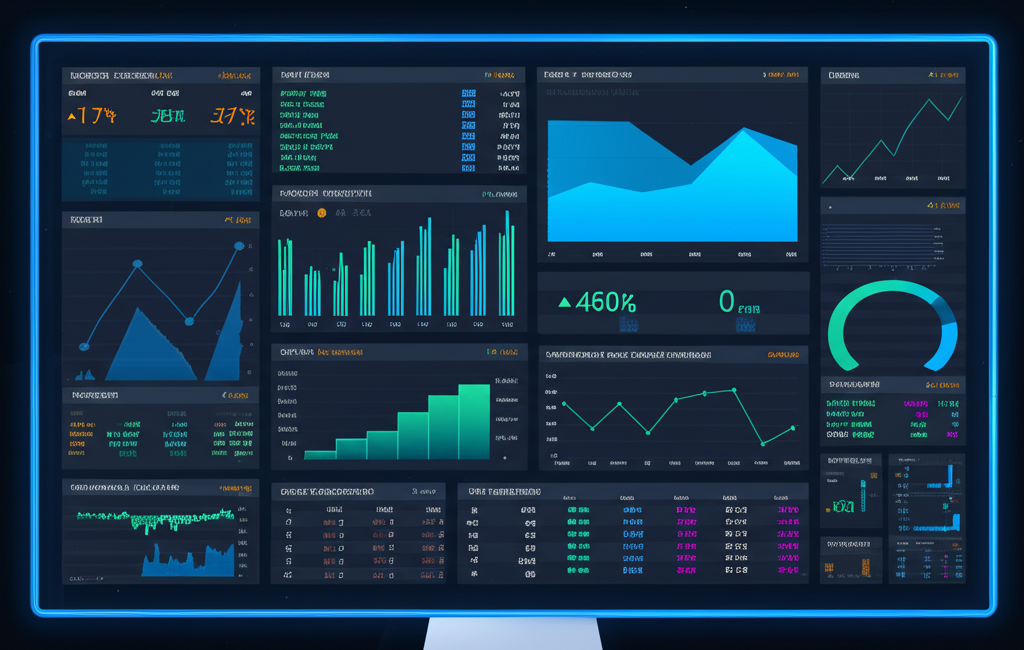Market volatility is often viewed with apprehension by traditional investors, but for algorithmic traders, it can represent a landscape rich with opportunities. In this article, we'll explore how algorithmic traders can leverage volatility to their advantage rather than fearing it, and discuss strategies specifically designed to thrive in volatile market conditions.
Understanding Market Volatility
Volatility, at its core, is a statistical measure of the dispersion of returns for a given security or market index. In simpler terms, it measures how much prices fluctuate over time. Volatility can be measured in several ways:
- Historical Volatility: Calculated using standard deviation of past price changes
- Implied Volatility: Derived from options prices, reflecting the market's expectation of future volatility
- Average True Range (ATR): A technical indicator that measures market volatility by decomposing the entire range of an asset price for a period
Volatility tends to cluster and exhibit mean-reverting properties, making it somewhat predictable and therefore exploitable by algorithmic strategies.
Why Volatility Creates Opportunities
For algorithmic traders, volatility creates opportunities in several ways:
1. Increased Price Movement
The most obvious benefit of volatility is the increased magnitude of price movements. Strategies that profit from directional moves can generate larger returns during volatile periods, provided they can accurately predict the direction of these moves.
2. Mispricing and Inefficiencies
Volatile markets often create temporary mispricings and inefficiencies as market participants react emotionally or are forced to liquidate positions. Algorithmic strategies can identify and exploit these inefficiencies without the emotional biases that affect human traders.
3. Mean Reversion Opportunities
Volatility often leads to price overreactions, creating opportunities for mean-reversion strategies that profit when prices return to their statistical averages or fair values.
4. Expanded Trading Ranges
Range-bound strategies benefit from the wider trading ranges that typically accompany increased volatility, allowing for more frequent and potentially more profitable entries and exits.
Algorithmic Strategies for Volatile Markets
Several types of algorithmic strategies are particularly well-suited to volatile market conditions:
1. Volatility Breakout Strategies
These strategies identify periods of low volatility (consolidation) and enter positions when volatility expands and prices break out of their ranges. Key components include:
- Volatility measurement using indicators like Bollinger Bands or ATR
- Identification of consolidation patterns
- Momentum-based entry triggers when volatility expands
- Trailing stops that adapt to changing volatility levels
2. Statistical Arbitrage
Statistical arbitrage strategies identify pairs or baskets of securities that typically move together but temporarily diverge during volatile periods. These strategies:
- Identify historically correlated assets
- Measure the degree of divergence using z-scores or other statistical measures
- Enter positions when divergence exceeds historical norms
- Exit when the relationship returns to its statistical average
3. Volatility-Based Mean Reversion
These strategies identify extreme price movements caused by volatility and enter positions in the opposite direction, expecting prices to revert to their means. Key elements include:
- Identification of overbought/oversold conditions using indicators like RSI or Stochastic
- Volatility filters to ensure the strategy only activates during appropriate market conditions
- Dynamic profit targets based on historical volatility levels
- Strict risk management to protect against trends that continue despite being "overbought" or "oversold"
4. Options Volatility Strategies
Options-based algorithms can directly capitalize on changes in volatility itself, rather than just directional price movements:
- Volatility arbitrage between implied and expected realized volatility
- Volatility surface modeling to identify mispriced options
- Calendar spreads that profit from term structure inefficiencies in implied volatility
- Dynamic delta-hedging strategies
Risk Management in Volatile Markets
While volatility creates opportunities, it also amplifies risks. Effective risk management is crucial for algorithmic traders in volatile markets:
1. Volatility-Adjusted Position Sizing
Rather than using fixed position sizes, adjust position sizes based on current volatility levels:
- Reduce position sizes when volatility increases
- Use ATR-based position sizing to maintain consistent risk per trade
- Implement maximum position size limits regardless of volatility calculations
2. Dynamic Stop-Loss Placement
Static stop-losses are often ineffective in volatile markets. Instead:
- Use volatility-based stops that adapt to changing market conditions
- Place stops beyond typical market noise levels
- Consider time-based stops for mean-reversion strategies
3. Correlation Management
During volatile periods, correlations between assets often change dramatically:
- Continuously monitor correlation matrices
- Reduce exposure to highly correlated positions
- Implement portfolio-level volatility caps
4. Circuit Breakers
Implement algorithmic "circuit breakers" that can:
- Pause trading when drawdowns exceed predetermined thresholds
- Reduce position sizes after consecutive losses
- Switch to alternative strategies during extreme volatility events
Measuring and Predicting Volatility
Successful volatility-based strategies require accurate measurement and prediction of volatility:
1. Historical Volatility Models
- Simple moving standard deviation of returns
- Parkinson's range-based volatility estimator
- Garman-Klass volatility using high, low, open, and close prices
2. Forward-Looking Volatility Models
- GARCH (Generalized Autoregressive Conditional Heteroskedasticity) models
- EWMA (Exponentially Weighted Moving Average) volatility
- Implied volatility from options markets
- Volatility regime detection using Hidden Markov Models
Conclusion
Market volatility, often feared by traditional investors, represents a rich landscape of opportunities for algorithmic traders. By implementing strategies specifically designed to capitalize on volatility, maintaining robust risk management practices, and accurately measuring and predicting volatility, algorithmic traders can transform volatility from a foe to a friend.
At Algocrab, we've developed a suite of volatility-based algorithmic strategies that help traders capitalize on market fluctuations while managing risk effectively. Our platform provides the tools, data, and infrastructure needed to implement these strategies with precision and confidence, allowing you to thrive even in the most turbulent market conditions.



